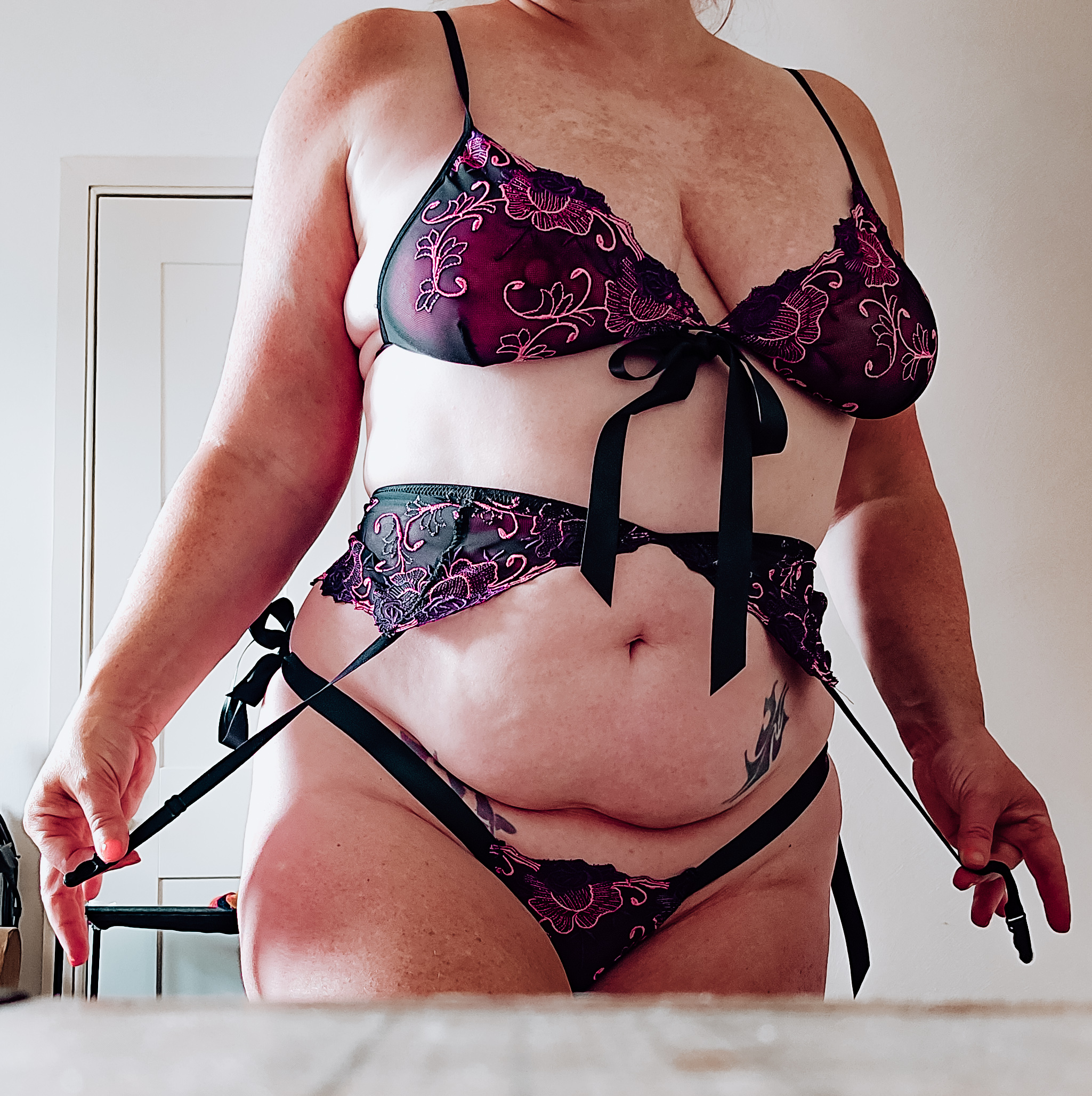Demigender Identity: A Journey Of Discovering Gender Outside The Binary
Understanding Demigender Identity
Exploring gender identity is a deeply personal journey, and for some individuals, that journey leads them beyond the traditional binary categories of male and female. Demigender identity is one such path, offering a space for those who experience their gender partially aligning with one gender while also feeling a connection to another, or simply existing outside the confines of the binary entirely.
Defining Demigender
Demigender individuals identify as partially aligning with one gender while feeling a partial connection to another, or not fully identifying with either. It’s a spectrum, meaning experiences vary greatly. Some demigenders might feel strongly connected to one gender but only partially, while others may feel a more equal split between two genders.
For example, someone might identify as demifemale, meaning they partially identify as female but also feel a connection to another gender. Others might describe themselves as demiboy, partially identifying as male but also feeling a connection to another gender. This fluidity and complexity make demigender identity a unique and personal experience.
Understanding demigender identity requires acknowledging that gender is not always binary. It’s about embracing the spectrum of human experiences and recognizing that individuals may express their gender in ways that defy traditional labels.
Beyond the Binary: Exploring Gender Fluidity
Understanding demigender identity is about recognizing that gender expression can exist beyond the confines of a binary system. Demigender individuals identify as partially aligning with one gender while also feeling a connection to another, or not fully identifying with either.
It’s important to remember that demigender is a spectrum, and experiences vary greatly.
- Some demigenders might feel strongly connected to one gender but only partially, while others may feel a more equal split between two genders.
- They might identify as demifemale, meaning they partially identify as female but also feel a connection to another gender.
- Others might describe themselves as demiboy, partially identifying as male but also feeling a connection to another gender.
Embracing the spectrum of human experiences and recognizing that individuals may express their gender in ways that defy traditional labels is crucial for fostering inclusivity and understanding.
The Spectrum of Demigender Experiences
Exploring gender identity is a deeply personal journey, and for some individuals, that journey leads them beyond the traditional binary categories of male and female. Demigender identity is one such path, offering a space for those who experience their gender partially aligning with one gender while also feeling a connection to another, or simply existing outside the confines of the binary entirely.
Demigender individuals identify as partially aligning with one gender while feeling a partial connection to another, or not fully identifying with either. It’s a spectrum, meaning experiences vary greatly. Some demigenders might feel strongly connected to one gender but only partially, while others may feel a more equal split between two genders.
For example, someone might identify as demifemale, meaning they partially identify as female but also feel a connection to another gender. Others might describe themselves as demiboy, partially identifying as male but also feeling a connection to another gender. This fluidity and complexity make demigender identity a unique and personal experience.
Understanding demigender identity requires acknowledging that gender is not always binary. It’s about embracing the spectrum of human experiences and recognizing that individuals may express their gender in ways that defy traditional labels.
Embracing and Navigating a Demigender Identity
Exploring gender identity is a deeply personal journey, and for some individuals, that journey leads them beyond the traditional binary categories of male and female. Demigender identity is one such path, offering a space for those who experience their gender partially aligning with one gender while also feeling a connection to another, or simply existing outside the confines of the binary entirely.
Recognizing Your Feelings and Experiences
Demigender individuals identify as partially aligning with one gender while feeling a partial connection to another, or not fully identifying with either. It’s a spectrum, meaning experiences vary greatly. Some demigenders might feel strongly connected to one gender but only partially, while others may feel a more equal split between two genders.
For example, someone might identify as demifemale, meaning they partially identify as female but also feel a connection to another gender. Others might describe themselves as demiboy, partially identifying as male but also feeling a connection to another gender. This fluidity and complexity make demigender identity a unique and personal experience.
Understanding demigender identity requires acknowledging that gender is not always binary. It’s about embracing the spectrum of human experiences and recognizing that individuals may express their gender in ways that defy traditional labels.
Recognizing and accepting your feelings and experiences is crucial for navigating a demigender identity. Pay attention to your internal sense of self, your comfort levels with different pronouns and terms, and how you feel when expressing yourself in various ways.
It’s important to remember that there’s no right or wrong way to be demigender. Your journey is unique, and it’s okay to explore, experiment, and evolve your understanding of your gender over time.
Connecting with others who share similar experiences can provide support and validation. Online communities, support groups, and LGBTQ+ centers offer spaces for individuals to connect, share their stories, and find a sense of belonging.
Coming to Terms with Your Identity
Exploring gender identity is a deeply personal journey, and for some individuals, that journey leads them beyond the traditional binary categories of male and female. Demigender identity is one such path, offering a space for those who experience their gender partially aligning with one gender while also feeling a connection to another, or simply existing outside the confines of the binary entirely.
Demigender individuals identify as partially aligning with one gender while feeling a partial connection to another, or not fully identifying with either. It’s a spectrum, meaning experiences vary greatly. Some demigenders might feel strongly connected to one gender but only partially, while others may feel a more equal split between spiderman sex two genders.
For example, someone might identify as demifemale, meaning they partially identify as female but also feel a connection to another gender. Others might describe themselves as demiboy, partially identifying as male but also feeling a connection to another gender. This fluidity and complexity make demigender identity a unique and personal experience.
Understanding demigender identity requires acknowledging that gender is not always binary. It’s about embracing the spectrum of human experiences and recognizing that individuals may express their gender in ways that defy traditional labels.
Recognizing and accepting your feelings and experiences is crucial for navigating a demigender identity. Pay attention to your internal sense of self, your comfort levels with different pronouns and terms, and how you feel when expressing yourself in various ways.
It’s important to remember that there’s no right or wrong way to be demigender. Your journey is unique, and it’s okay to explore, experiment, and evolve your understanding of your gender over time.
Connecting with others who share similar experiences can provide support and validation. Online communities, support groups, and LGBTQ+ centers offer spaces for individuals to connect, share their stories, and find a sense of belonging.
Finding Support and Community
Exploring gender identity is a deeply personal journey, and for some individuals, that journey leads them beyond the traditional binary categories of male and female. Demigender identity is one such path, offering a space for those who experience their gender partially aligning with one gender while also feeling a connection to another, or simply existing outside the confines of the binary entirely.
Demigender individuals identify as partially aligning with one gender while feeling a partial connection to another, or not fully identifying with either. It’s a spectrum, meaning experiences vary greatly. Some demigenders might feel strongly connected to one gender but only partially, while others may feel a more equal split between two genders.
For example, someone might identify as demifemale, meaning they partially identify as female but also feel a connection to another gender. Others might describe themselves as demiboy, partially identifying as male but also feeling a connection to another gender. This fluidity and complexity make demigender identity a unique and personal experience.
Understanding demigender identity requires acknowledging that gender is not always binary. It’s about embracing the spectrum of human experiences and recognizing that individuals may express their gender in ways that defy traditional labels.
Navigating a demigender identity can be empowering, but it also comes with unique challenges. Societal expectations and limited understanding of non-binary identities can lead to feelings of isolation or pressure to conform. Finding supportive communities and allies is crucial for fostering a sense of belonging and validation.
Recognizing and accepting your feelings and experiences is crucial for navigating a demigender identity. Pay attention to your internal sense of self, your comfort levels with different pronouns and terms, and how you feel when expressing yourself in various ways.
It’s important to remember that there’s no right or wrong way to be demigender. Your journey is unique, and it’s okay to explore, experiment, and evolve your understanding of your gender over time.
Connecting with others who share similar experiences can provide support and validation. Online communities, support groups, and LGBTQ+ centers offer spaces for individuals to connect, share their stories, and find a sense of belonging.
Expression and Self-Discovery
Exploring gender identity is a deeply personal journey, and for some individuals, that journey leads them beyond the traditional binary categories of male and female. Demigender identity is one such path, offering a space for those who experience their gender partially aligning with one gender while also feeling a connection to another, or simply existing outside the confines of the binary entirely.
Demigender individuals identify as partially aligning with one gender while feeling a partial connection to another, or not fully identifying with either. It’s a spectrum, meaning experiences vary greatly. Some demigenders might feel strongly connected to one gender but only partially, while others may feel a more equal split between two genders.
For example, someone might identify as demifemale, meaning they partially identify as female but also feel a connection to another gender. Others might describe themselves as demiboy, partially identifying as male but also feeling a connection to another gender. This fluidity and complexity make demigender identity a unique and personal experience.
Understanding demigender identity requires acknowledging that gender is not always binary. It’s about embracing the spectrum of human experiences and recognizing that individuals may express their gender in ways that defy traditional labels.
Pronouns and Name Choices
Exploring gender identity is a deeply personal journey, and for some individuals, that journey leads them beyond the traditional binary categories of male and female. Demigender identity is one such path, offering a space for those who experience their gender partially aligning with one gender while also feeling a connection to another, or simply existing outside the confines of the binary entirely.
Demigender individuals identify as partially aligning with one gender while feeling a partial connection to another, or not fully identifying with either. It’s a spectrum, meaning experiences vary greatly. Some demigenders might feel strongly connected to one gender but only partially, while others may feel a more equal split between two genders.
For example:
- Someone might identify as demifemale, meaning they partially identify as female but also feel a connection to another gender.
- Others might describe themselves as demiboy, partially identifying as male but also feeling a connection to another gender.
Understanding demigender identity requires acknowledging that gender is not always binary. It’s about embracing the spectrum of human experiences and recognizing that individuals may express their gender in ways that defy traditional labels.
Recognizing and accepting your feelings and experiences is crucial for navigating a demigender identity. Pay attention to your internal sense of self, your comfort levels with different pronouns and terms, and how you feel when expressing yourself in various ways.
It’s important to remember that there’s no right or wrong way to be demigender. Your journey is unique, and it’s okay to explore, experiment, and evolve your understanding of your gender over time.
Connecting with others who share similar experiences can provide support and validation. Online communities, support groups, and LGBTQ+ centers offer spaces for individuals to connect, share their stories, and find a sense of belonging.
Clothing, Style, and Appearance
Exploring gender identity is a deeply personal journey, and for some individuals, that journey leads them beyond the traditional binary categories of male and female. Demigender identity is one such path, offering a space for those who experience their gender partially aligning with one gender while also feeling a connection to another, or simply existing outside the confines of the binary entirely.
Demigender individuals identify as partially aligning with one gender while feeling a partial connection to another, or not fully identifying with either. It’s a spectrum, meaning experiences vary greatly. Some demigenders might feel strongly connected to one gender but only partially, while others may feel a more equal split between two genders.

For example, someone might identify as demifemale, meaning they partially identify as female but also feel a connection to another gender. Others might describe themselves as demiboy, partially identifying as male but also feeling a connection to another gender. This fluidity and complexity make demigender identity a unique and personal experience.
Understanding demigender identity requires acknowledging that gender is not always binary. It’s about embracing the spectrum of human experiences and recognizing that individuals may express their gender in ways that defy traditional labels.
Clothing, style, and appearance play a significant role in self-expression for many individuals, and this is especially true for those exploring demigender identity.
Demigenders can choose to express themselves through clothing, hairstyles, makeup, or other forms of self-presentation in ways that align with their gender identity, regardless of societal expectations.
Some demigenders may opt for clothing traditionally associated with a particular gender, while others may prefer androgynous or non-conforming styles. There is no right or wrong way to express one’s gender through appearance; it’s about finding what feels authentic and comfortable.
Ultimately, the most important aspect of self-expression for demigender individuals is that it aligns with their internal sense of self and brings them a sense of authenticity and belonging.
Social Interactions and Disclosure
Expression and self-discovery are intertwined experiences for individuals exploring their gender identity. Demigenders, in particular, navigate this journey by expressing themselves in ways that resonate with their unique experiences.
Social interactions can be both challenging and rewarding for demigender individuals. Disclosure, the act of sharing one’s gender identity with others, is a deeply personal decision that varies from person to person. Some may choose to come out to close friends and family first, while others may prefer to disclose to a wider circle gradually or only when they feel comfortable.
The level of disclosure can also evolve over time as an individual becomes more comfortable with their identity. It’s important to respect an individual’s choices regarding disclosure and create safe and supportive spaces where they can feel empowered to share at their own pace.
Understanding that demigender individuals may use a variety of pronouns (such as she/her, he/him, they/them, or a combination) is crucial for fostering inclusivity and respect. Encouraging open communication and asking how someone prefers to be addressed can demonstrate care and consideration.
By creating environments that are accepting, understanding, and validating of diverse gender identities, we can contribute to a more inclusive society where individuals feel empowered to express themselves authentically.
Resources and Further Exploration
For those seeking further information about demigender identity, a variety of resources are available online and in communities.
Websites like The Trevor Project, GLAAD, and PFLAG offer comprehensive guides, articles, and support services for LGBTQ+ individuals, including demigender people.
Local LGBTQ+ centers often host workshops, support groups, and social events that provide opportunities to connect with others who share similar experiences.
Engaging in conversations with trusted friends, family members, or mental health professionals can also be helpful for deepening understanding and providing personal support.
Online Communities and Forums
For those seeking further information about demigender identity, a variety of resources are available online and in communities. Websites like The Trevor Project, GLAAD, and PFLAG offer comprehensive guides, articles, and support services for LGBTQ+ individuals, including demigender people.
Local LGBTQ+ centers often host workshops, support groups, and social events that provide opportunities to connect with others who share similar experiences.
Engaging in conversations with trusted friends, family members, or mental health professionals can also be helpful for deepening understanding and providing personal support.
Online communities and forums dedicated to demigender individuals offer a space for sharing experiences, asking questions, and finding support. These platforms allow individuals to connect with others who understand their unique journey, fostering a sense of belonging and validation.
Remember that exploring gender identity is a personal process, and it’s okay to take your time and seek out the resources that feel most supportive and helpful for you.
Books and Articles on Demigender Identity

For those seeking further information about demigender identity, a variety of resources are available online and in communities.
- Websites like The Trevor Project, GLAAD, and PFLAG offer comprehensive guides, articles, and support services for LGBTQ+ individuals, including demigender people.
- Local LGBTQ+ centers often host workshops, support groups, and social events that provide opportunities to connect with others who share similar experiences.
- Engaging in conversations with trusted friends, family members, or mental health professionals can also be helpful for deepening understanding and providing personal support.
Online communities and forums dedicated to demigender individuals offer a space for sharing experiences, asking questions, and finding support. These platforms allow individuals to connect with others who understand their unique journey, fostering a sense of belonging and validation.

Remember that exploring gender identity is a personal process, and it’s okay to take your time and seek out the resources that feel most supportive and helpful for you.
Therapists and Counselors Specialized in Gender Identity
For those seeking further information about demigender identity, a variety of resources are available online and in communities.
Websites like The Trevor Project, GLAAD, and PFLAG offer comprehensive guides, articles, and support services for LGBTQ+ individuals, including demigender people.
Local LGBTQ+ centers often host workshops, support groups, and social events that provide opportunities to connect with others who share similar experiences.
Engaging in conversations with trusted friends, family members, or mental health professionals can also be helpful for deepening understanding and providing personal support.
Online communities and forums dedicated to demigender individuals offer a space for sharing experiences, asking questions, and finding support. These platforms allow individuals to connect with others who understand their unique journey, fostering a sense of belonging and validation.
Remember that exploring gender identity is a personal process, and it’s okay to take your time and seek out the resources that feel most supportive and helpful for you.
Therapists and Counselors Specialized in Gender Identity
Working with a therapist or counselor who specializes in gender identity can be invaluable for demigender individuals. These professionals have expertise in navigating the complexities of gender exploration, providing support, guidance, and validation throughout the journey.
They can offer:
- A safe and non-judgmental space to explore feelings and experiences related to gender identity.
- Assistance with understanding and expressing gender in ways that feel authentic.
- Support in navigating social transitions, including coming out and adjusting to new pronouns or names.
- Guidance on coping with any challenges or discrimination faced due to gender identity.
Finding a therapist who is knowledgeable about demigender experiences is important for ensuring that your needs are met effectively. Online directories, LGBTQ+ organizations, and referrals from trusted individuals can help in locating qualified professionals.
- Why Can’t You Get Lip Filler With A Cold Sore - November 3, 2025
- What Is The Best Dosage Of CBD Infused Gummies For Pain Relief - October 31, 2025
- Nu-Derm Skin System Near Ewell, Surrey - October 29, 2025

